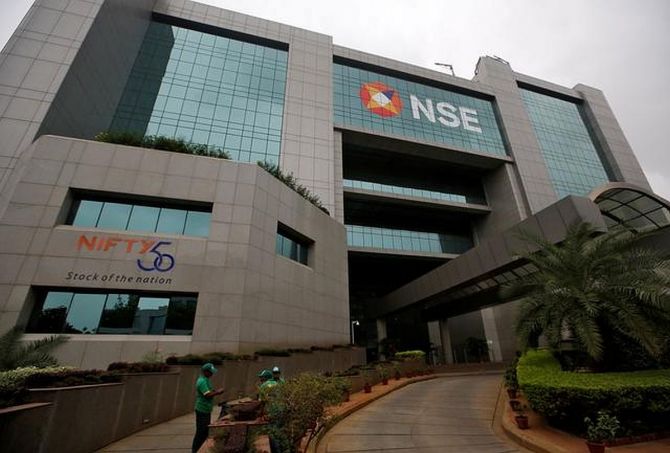Nifty achieves another milestone as valuation hits all-time high of 40x

This is first time in 25 years that a benchmark equity index in India is trading at a P/E multiple of 40x or higher.
The benchmark Nifty50 index on Tuesday reached another milestone in its journey to scale fresh peaks.
The index price-to-earnings (P/E) multiple reached an all-time high of 40x on Tuesday when it made an intra-day high of 14,590.65.
The index closed the day with a P/E multiple of 39.9 and earnings per share (EPS, or earnings per unit of the index) of Rs 364.6.
This is first time in 25 years that a benchmark equity index in India is trading at a P/E multiple of 40x or higher.
The BSE Sensex had last traded at 40x or higher in October 1994.
The Sensex valuation had peaked at a P/E multiple of 57.4x in April 1992 at the height of the Harshad Mehta-led rally on the bourses.
It is currently trading at a P/E multiple of around 35x — the highest in 25 years.
Analysts, however, say the current valuations are not comparable to the market valuation in the early 1990s.
“In the early 1990s, the overall size of the equity market in India was very small.
“The overall market capitalisation (m-cap) was accounted for by a handful of large companies,” says G Chokkalingam, founder and chief executive officer, Equinomics Research & Advisory Services.
Analysts say a relatively low m-cap made it easier for traders to push valuations to extreme levels in the past, compared to the current market.
According to the data from the Reserve Bank of India (RBI), the combined m-cap of all BSE-listed companies was Rs 3.23 trillion at the end of March 1992 and Rs 4.35 trillion at the end of March 1995.
This has now ballooned to Rs 197.5 trillion as of Tuesday.
The underlying corporate and economic fundamentals have, however, not kept pace with the surge in stock valuation on the bourses in the past nine months.
For example, while the Nifty valuations touched a new high on Tuesday, the index underlying EPS — that tracks the combined earnings of 50 index companies — is still down nearly 20 per cent from the highs reached in January this year.
Similarly, the index companies’ return on equity (RoE) continues to hover around record lows and is down nearly 310 basis points since the beginning of calendar year 2020.
One basis point is one-hundredth of a per cent.
The index companies’ RoE is 10.2 per cent on average, currently down from 13.3 per cent at the end of December 2019.
For comparison, the Sensex RoE was around 18 per cent in April 1992 at the height of the Harshad Mehta rally and 14.4 per cent in October 1994.
On Monday, the RBI governor raised concerns over the growing disconnect between the financial markets and the real economy, saying stretched valuations posed a risk to financial stability.
The International Monetary Fund has raised similar concerns in its Financial Stability Report published in June 2020.
Market analysts, however, say there no ceiling on the market on the upside, given the gush of liquidity at the bourses.
“The stock price and valuations will continue to rise as long as liquidity remains benign.
“Foreign investors are pumping in fresh capital of Rs 2,000-3,000 crore a day on the Indian bourses, pushing markets to new highs,” says Dhananjay Sinha, head-research, Systematix Institutional Equities.
According to him, the markets will cool only when the central bank tightens liquidity due to fears of hyperinflation.
But this scenario looks remote right now.
The market has also got a boost from a sharp rise in the entry of new investors.
According to the data from the BSE, nearly 1.6 million new investors entered the market in the past one month alone at the rate of around 50,000 per day.
“This has pushed investor optimism to record levels and the rally will continue for some more time,” adds Chokkalingam.
Photograph: Francis Mascarenhas/Reuters
Source: Read Full Article

